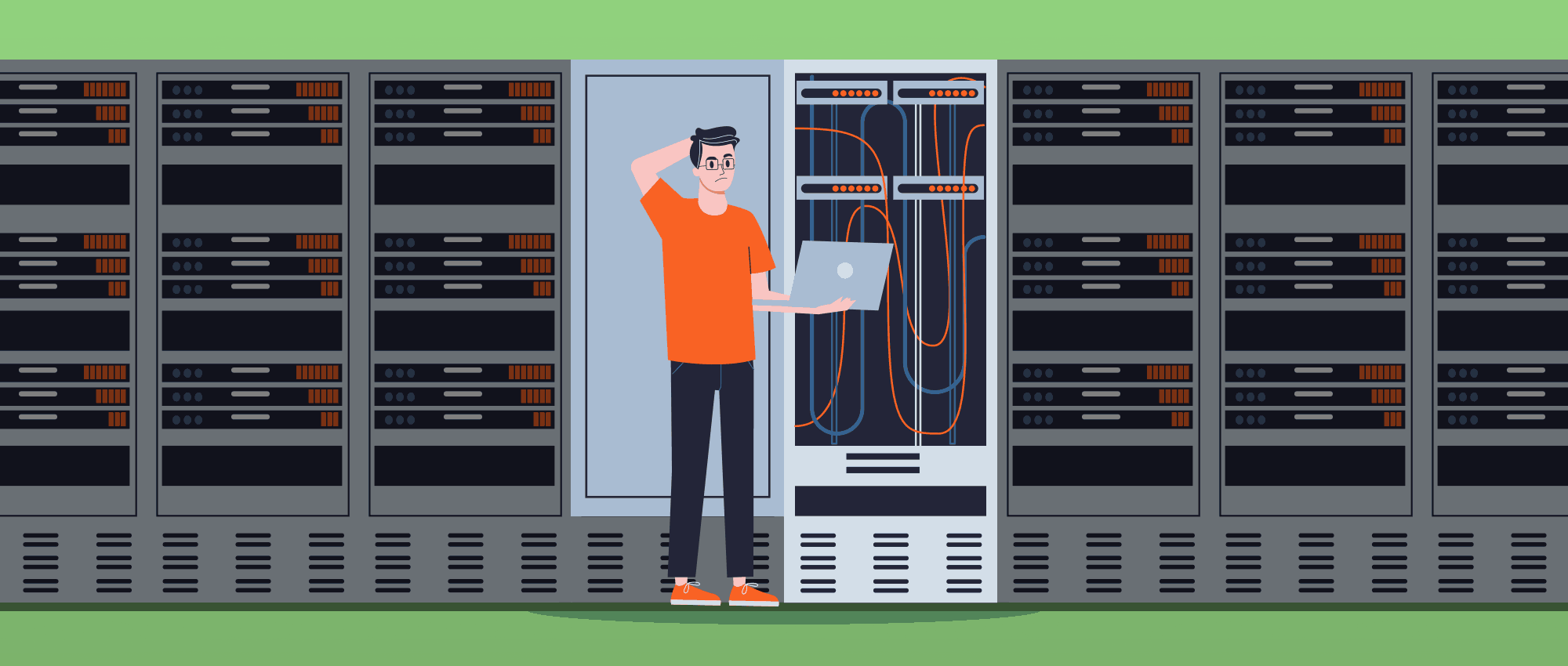
Article
Is my website environmentally friendly?
PUBLISHED:May 11, 2021
UPDATED:February 23, 2024
Most of us that operate a business in some shape or form have been making an effort to be more green for some years now. Be it the introduction of paper & plastics recycling bins or encouraging more cycle-to-work schemes, everyone is trying to do their bit to help the environment.
But what about our digital carbon footprint? How much attention are we paying to our online activities and particularly our websites?
No one seems to be asking the question; is my website environmentally friendly?
The above question may seem strange to some. Isn’t it obvious that having a website to promote your services is far greener than printing 20,000 brochures every year, many of which need to be binned when the information needs to change? Of course, this is true, but we shouldn’t be complacent in thinking that the internet is not having an impact on the environment.
In fact, the popularity of internet-based businesses and activities is causing a substantial rise in CO2 emissions.
How much energy does the internet use?
By now I am sure you have seen images of the huge server farms and data centres that web companies use to host sites all around the world. From AWS to Google and beyond, these companies own enormous buildings filled with servers, all of which require vast amounts of electricity to run and other resources to keep cool. (we don’t want those servers overheating!)
The chances are that your website sits on one of those servers. Always on and always contributing to the rise in power consumption of the internet.
In fact, as of January 2021, there are 1,197,982,359 websites in the world. Always on. Always communicating.
So how much energy does the internet use? We’ll let you do the deep-diving on the info and just give you the highlights…
- According to websitecarbon.com, the internet consumes 416.2TWh of electricity per year. That’s more than the entire United Kingdom!
- All of that electricity consumption results in carbon emissions, with the average website emitting 2,112 kg of CO2 every year.
- A study by the Boston Consulting Group found that the internet is responsible for around 1 billion tonnes of greenhouse gas emissions per year. That’s about 2% of total emissions which is the same as the aviation industry.
2% Doesn’t sound like much, but it’s going up all the time. Factor in all of our gadgets and that figure almost doubles.
One big contributing factor to this rise in emissions is the use of email.
How much energy does email use?
All of us use email every day. It’s hard to function without it. We all send our fair share of emails (sometimes more than our fair share!) and we receive a lot of emails too.
We receive emails from friends, and colleagues at work and countless newsletters that we have subscribed to over the years. Not to mention the spam!
Each of these emails – every single one – contributes to our carbon emissions. Stats vary, but the consensus is that:
- The average email with an attachment releases 50g of CO2e
- An email without an attachment releases 4g of CO2e
- The average spam email releases 0.03g of CO2e, but since there are approximately 62 trillion spam messages sent every year, the result is 33bn kWh of electricity used, releasing around 20 million tonnes of CO2e per year.
You can calculate your approximate CO2e email emissions here if you feel like putting yourself on a bit of a downer. But we want to be a little more positive & proactive…
How can I reduce my email carbon emissions?
- Hit unsubscribe! – Think about all those emails that you delete because you don’t have time to read. If you are never going to read them, it’s best not to receive them in the first place.
- Minimise emails received – If you can’t face clicking the unsubscribe link, at least see if you can change your preferences to receive email newsletters less frequently. A weekly digest of news may be more appropriate than daily updates.
- Don’t copy-in everyone! This is especially true for the workplace. Everyone is busy enough as it is without trawling through dozens of emails that actually have nothing to do with them, so only include those that really need to be included in your email chain.
- Reduce the number of attachments sent and the size of those attachments – Workers in bigger companies may have access to a server. In this case, just send the recipient a link or instructions, enabling them to get what they need from the company server rather than emailing them the file.
- Move email provider – Talk to your IT department about moving to a greener email provider that uses greener technology and offsets their carbon emissions.
With your email under control and moving in a greener direction, it’s time to turn your attention to your website.
How can I make my website more environmentally friendly?
The amount of CO2e produced by your website will depend upon a range of factors, such as the number of pages viewed and how graphics-intensive those pages are.
Quite simply, the more complex and media-rich a website, the higher the production of CO2e.
But there are ways to make your website more sustainable. Even if you use a lot of graphics and video, the chances are you can still do your bit for the environment.
Eco-friendly web design tips
- Minify your code – The less code that your site needs to render itself, the better it will be for the environment. Template systems such as those used for WordPress are often bloated with code that you’ll never use, so consider switching to a bespoke WordPress theme design that is tailored to your exact needs.
- Reduce the reliance on plugins – Again, focussing on the WordPress CMS, much of a website’s functionality often comes from 3rd-party plugins. Each of these adds more code and slows performance. A good WordPress development agency will often write its own plugins that are streamlined & lightweight, but will often avoid using plugins at all if possible.
- Reduce image sizes – We all need to get used to optimising our images before uploading them to our sites. A good web design agency will advise you on the best image size and format, so feel free to ask them for tips.
- Use vector graphics instead of jpegs or GIFs for logos & icons – Vector graphics are far smaller in size and deliver the bonus of scalability, which means your logo will always look crisp on any device at any size.
- Stop auto-playing video – Quite frankly this can be annoying just from a usability point of view, but setting video content to not play automatically will heavily reduce your website’s carbon footprint.
- Minimise the use of custom fonts – This is a bit of a downer for website designers and companies wanting their brand to look as professional online as they do offline. But the fact is that the more fonts you use, the slower a website becomes and the more power it needs to render. So keep custom fonts to a minimum and if possible stick to websafe fonts.
- Reduce third-party scripts – A script is a piece of code inserted somewhere on your site that communicates with another service such as Google Analytics. Every script adds more code to your site, which becomes slower with each additional script that you add. So remove all redundant scripts from your site and only keep those that you definitely need.
- Use AMP (Accelerated Mobile Pages) – This technology enables faster browsing of your website on mobile devices by reducing the size of the pages that are being served. When you consider that mobile traffic can now account for well over 50% of visitors, embracing AMP will help your website be more environmentally friendly.
Any good web development agency worth their sort should already be taking care of the above list, which leaves one final item to take care of… your web hosting.
Green Website Hosting
As WordPress development experts, we have experimented with a range of specialist WordPress hosting companies over the years.
Our aim has always been to find a company that strikes the right balance between security, speed and cost. But now we are also looking at their eco-credentials.
It takes some digging – checking their FAQ pages and blogs – but we believe that the outlook for green website hosting is bright.
In fact, we recently started to migrate many of our clients over to Kinsta, who use Google’s Cloud Platform to host their websites.
How green is Google?
Some of you are now thinking something along the lines of ‘That all sounds great, but just how green is Google?’.
Google are indeed a huge company and with that comes the need for enormous amounts of power. They are reported to have released 4.9 million metric tons of greenhouse gases in 2018 alone, but at least they are open about it.
Offsetting emissions is a step in the right direction, which Google has been doing since 2007, but it’s their pledge to run their businesses purely on carbon-free energy by 2030 that really catches our eye.
Because of their renewable energy programs, Google is well on the way to meeting its green targets, which is more than can be said of some governments.
In conclusion
You came here looking for an answer to a question, and that question was ‘is my website environmentally friendly?’.
You can measure your website’s carbon footprint here and then improve upon your results by utilising the best web design & development practices, reducing your email usage and switching to a green website hosting company.
Hopefully, we have given you some great tips to help you achieve your goal of running a much greener website and perhaps even aim for carbon neutrality in the years to come.
If you would like help improving your website’s green credentials with a new bespoke design and hosting that is fast, secure and environmentally friendly, then get in touch with us at LWDA. We’re always happy to discuss your needs.






